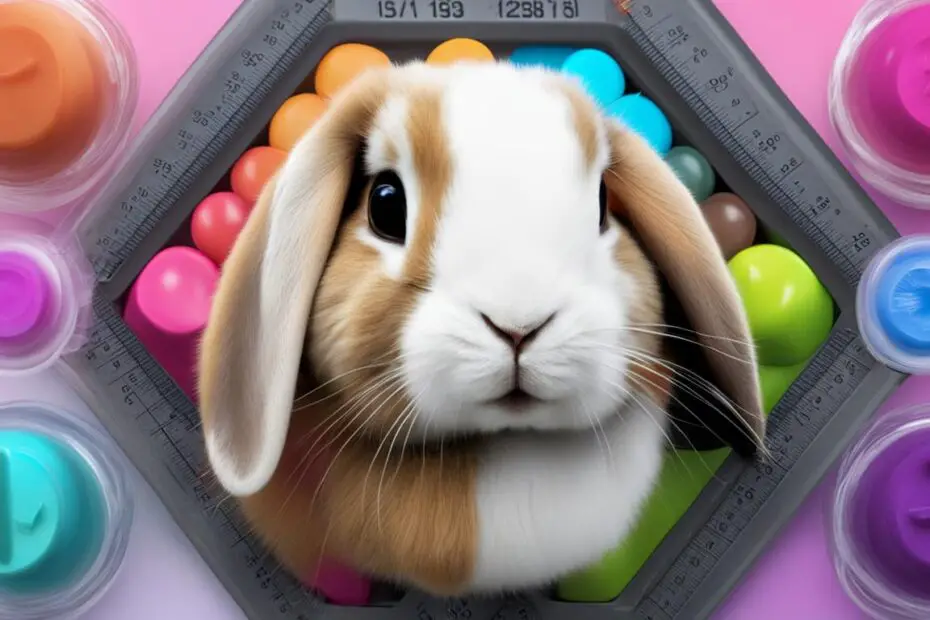Welcome to our comprehensive guide on rabbit color genetics! If you’re a breeder or a rabbit enthusiast, understanding the genetics behind coat color variations is crucial. The rabbit color calculator is a powerful tool that can help you predict the color and patterns of your rabbits’ offspring by analyzing the combination of their sire’s and dam’s genes.
There are five main gene groups (A, B, C, D, E) that play a significant role in determining the majority of color variations in rabbits. The calculator takes into account these genes and can also consider additional genes for a more accurate prediction. By using the rabbit color calculator, you can make informed decisions about breeding programs, plan for desired color outcomes, or simply satisfy your curiosity about potential color combinations.
Understanding rabbit color genetics goes beyond predicting coat colors. It allows you to appreciate the intricate and fascinating variations found within different rabbit breeds. So, let’s dive into the colorful world of rabbits and explore the genetics behind their coats!
Key Takeaways:
- The rabbit color calculator helps predict the color and patterns of offspring based on the genes of the sire and dam.
- There are five main gene groups (A, B, C, D, E) that determine the majority of color variations in rabbits.
- Additional genes can be included in the rabbit color calculator for a more accurate prediction.
- Understanding rabbit color genetics is essential for breeders and enthusiasts.
- The calculator is a valuable tool for planning breeding programs and exploring color possibilities.
The Colorful World of Rabbits: What Color Are They?
Rabbits come in a wide range of colors, including white, black, brown, gray, and blue. However, a rabbit’s fur color does not necessarily indicate its breed. For example, Dutch rabbits can be any color, not just black and white. It is important to refer to a rabbit breed color chart to determine the specific color of a particular breed. Understanding the diverse range of colors in rabbits can help in selecting and naming your furry friend.
The Rainbow of Rabbit Colors
Rabbits exhibit a stunning variety of coat colors, making them a visually captivating pet choice. From pure white to jet black, and everything in between, the colors of rabbits can be as diverse as the colors of the rainbow. Some popular coat colors include:
- White: Snowball, Frost
- Black: Midnight, Shadow
- Brown: Cocoa, Hazel
- Gray: Ash, Misty
- Blue: Sky, Sapphire
These colors can occur in various patterns and shades, adding to the enchanting beauty of rabbits.
The Importance of a Rabbit Breed Color Chart
While rabbits can display an array of colors, it’s crucial to consult a rabbit breed color chart to accurately identify the color of a specific breed. This chart provides a visual reference that categorizes and organizes the different colors and patterns found within each breed. It helps breeders and enthusiasts distinguish between similar coat colors and select rabbits that meet specific color standards. The rabbit breed color chart serves as a valuable tool in the world of rabbit genetics, ensuring accurate identification and understanding of the colors present in different breeds.
Choosing the Perfect Name
Once you have identified your rabbit’s color, you can draw inspiration from it to choose the perfect name for your furry companion. Matching their coat color with a fitting name can add a touch of personalization and make the bond between you and your rabbit even stronger. Whether it’s calling your white rabbit Snowball or your brown rabbit Hazel, finding a name that reflects their unique coat color can be a fun and creative process, allowing you to celebrate their individuality.
Decoding the Rabbit Identification Color Chart
The rabbit identification color chart is a valuable tool for breeders and enthusiasts to understand the genetics behind the coat colors of rabbits. This chart categorizes rabbit colors based on the five main gene groups (A, B, C, D, E) and provides a visual reference for determining the dominant and recessive alleles that contribute to a rabbit’s coat color and pattern.
By referring to the rabbit identification color chart, breeders and enthusiasts can gain insights into the possible color combinations of offspring based on the genes of the parents. The chart allows for a better understanding of how specific genes interact and influence the coat color of rabbits. It helps breeders make informed decisions when planning breeding programs and selecting rabbits with desired coat colors and patterns.
| Gene Group | Alleles | Coat Color |
|---|---|---|
| A | A | Agouti Pattern (Wild Type) |
| B | B | Black |
| C | C | Full Color (Non-Diluted) |
| D | D | Dense Pigmentation |
| E | E | No Extension of Color |
The table above provides an overview of the five main gene groups and the corresponding coat colors. Each gene group has specific alleles that determine the expression of a particular coat color trait. For example, the B gene is responsible for black coat color, while the C gene dictates full color without dilution. Understanding these gene groups and their associated coat colors is essential for interpreting the rabbit identification color chart.
By using the rabbit identification color chart and analyzing the genes of rabbits, breeders and enthusiasts can make more accurate predictions about the coat colors and patterns of future offspring. This knowledge enables them to create breeding programs that produce desired coat colors and patterns, contributing to the diversity and beauty of different rabbit breeds.
Understanding Rabbit Color Genetics
Rabbit color genetics is a fascinating subject that delves into the intricate interactions of multiple genes to determine the coat color and pattern of these adorable creatures. Each gene group (A, B, C, D, E) plays a significant role in shaping the color variations seen in rabbits. Dominant alleles, denoted by capital letters, are always visible in the phenotype, while recessive alleles, denoted by lowercase letters, only manifest when both alleles are recessive. The inheritance of these genes follows specific patterns, which can be predicted using tools like the Punnett square.
To better understand rabbit color genetics, it is helpful to refer to a rabbit breed color chart. This chart categorizes colors based on the five main gene groups, providing a visual representation of the dominant and recessive alleles. By studying the chart, breeders and enthusiasts can gain insights into the potential color combinations of offspring based on the genetic makeup of the parents.
Additionally, there are various additional genes that can influence a rabbit’s coat color. These genes, outside the main gene groups, contribute to the complexity and diversity of coat color variations seen in different breeds. Including these additional genes in the rabbit color calculator can provide a more accurate prediction of offspring coat colors.
Overall, understanding rabbit color genetics allows breeders and enthusiasts to make informed decisions when planning breeding programs and to appreciate the beauty and uniqueness of different coat colors in rabbits. It is a captivating field that continuously unveils new insights into the inheritance patterns and genetic factors that shape the rainbow of colors observed in these delightful creatures.
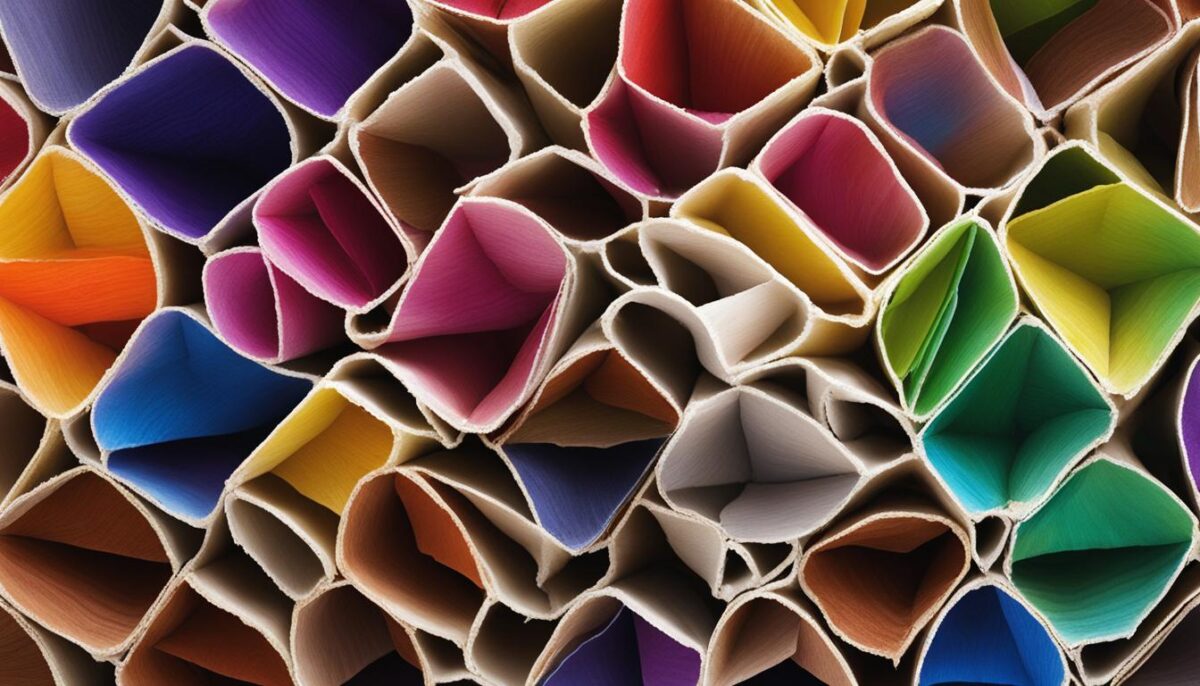
| Gene Group | Phenotype | Genotype |
|---|---|---|
| A | Agouti (wild-type) | A_ |
| Non-agouti (self) | aa | |
| B | Black | B_ |
| Chocolate | bb | |
| C | Full color | C_ |
| Chinchilla | cc (Cchl) | |
| D | Non-diluted | D_ |
| Diluted | dd | |
| E | Normal extension | E_ |
| Non-extension | ee |
Using the Rabbit Color Calculator
The rabbit color calculator is a valuable tool for breeders and enthusiasts who want to predict the coat colors of their rabbits’ offspring. This online calculator offers two modes: “color” and “genes.” In the “color” mode, users can select the colors of the sire and dam from a list and choose whether to include additional genes. In the “genes” mode, users can specify the complete genotypes of the rabbits’ color. The calculator then computes the possible color genes for the parents and provides a list of the most probable color possibilities for the offspring.
The rabbit color calculator is convenient and easy to use. It can help breeders plan their breeding programs more effectively by providing insights into the potential color outcomes of different mating combinations. It can also satisfy the curiosity of rabbit enthusiasts who want to explore the fascinating world of rabbit coat colors and patterns. By utilizing this calculator, breeders and enthusiasts can make more informed decisions about their rabbits’ genetics and create beautiful and diverse litters.
With the rabbit color calculator, it’s possible to delve deeper into the intricate world of rabbit color genetics. By exploring the different combinations of color genes, breeders and enthusiasts can gain a better understanding of how specific traits are inherited and passed down through generations. The calculator’s ability to predict the possible color outcomes of offspring based on parental genetics empowers breeders to make strategic breeding choices and work towards their desired color outcomes. Whether you’re a novice breeder or an experienced enthusiast, the rabbit color calculator is a valuable resource for exploring the genetic possibilities of rabbit coat colors.
The rabbit color calculator is an essential tool for anyone interested in rabbit breeding and genetics. It provides a convenient way to calculate and predict the coat colors of rabbit offspring, helping breeders plan their breeding programs more effectively. Whether you’re a beginner breeder or an experienced enthusiast, the rabbit color calculator is a valuable resource that can enhance your understanding and appreciation of rabbit coat colors.
Exploring Additional Genes in Rabbit Color Genetics
In addition to the five main gene groups (A, B, C, D, E), there are various additional genes that can influence a rabbit’s coat color. These genes can be included in the rabbit color calculator if desired. They contribute to the overall complexity of rabbit color genetics and provide even more possibilities for coat color variations. Referring to a rabbit breed color chart can help in understanding the effects of these additional genes on specific breeds.
While the five main gene groups play a significant role in determining a rabbit’s coat color, additional genes can further contribute to the variety of colors and patterns that can be seen in different rabbit breeds. These additional genes may affect the expression of the main genes or introduce new color variations altogether. By considering these additional genes in rabbit color genetics, breeders and enthusiasts can explore a wider range of possibilities when planning their breeding programs.
For example, the dilution gene (D), which can be recessive or dominant, influences the intensity of color in a rabbit’s coat. When the dilution gene is present, it lightens the coat color, resulting in shades such as blue or lilac. On the other hand, the extension gene (E) determines whether the color will be extended throughout the rabbit’s coat or restricted to specific areas, creating patterns such as agouti or self.
Understanding the effects of these additional genes on rabbit coat color can be complex, but it allows for a more comprehensive understanding of the genetics behind the diverse range of colors seen in different rabbit breeds. By consulting a rabbit breed color chart, breeders and enthusiasts can gain insights into how these additional genes interact with the main gene groups to produce various coat color combinations. This knowledge can be invaluable in selecting and breeding rabbits with specific coat color traits.
The Effects of Additional Genes in Rabbit Coat Color Genetics
Consider the following table that highlights some of the additional genes and their effects on rabbit coat color:
| Gene | Effect on Coat Color |
|---|---|
| B | Black Extension |
| C | Chinchilla |
| D | Dilution |
| E | Extension |
These additional genes, when combined with the main gene groups, contribute to the wide array of coat colors and patterns observed in different rabbit breeds. By exploring the effects of these genes, breeders and enthusiasts can better understand and appreciate the intricacies of rabbit color genetics.
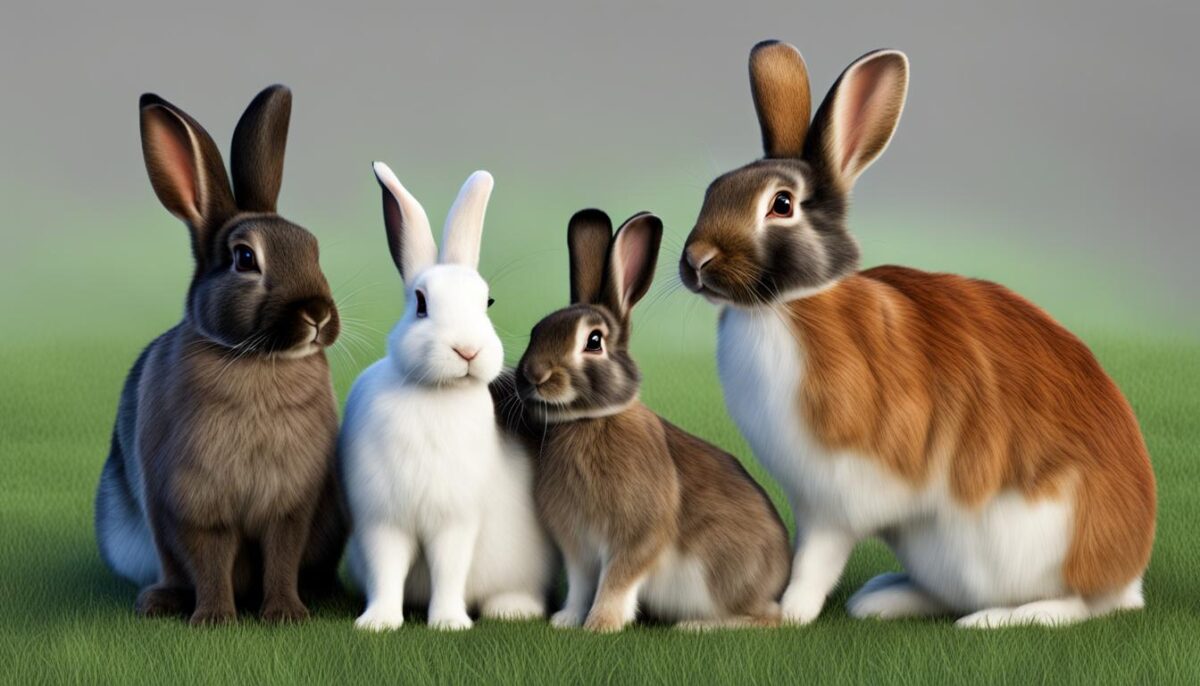
The addition of these extra genes brings a whole new level of complexity to rabbit color genetics. It adds depth and variation to the already fascinating world of rabbit coat colors. Whether you are a breeder looking to create unique color combinations or an enthusiast marveling at the beauty of rabbits, delving into the effects of these additional genes will open your eyes to the incredible diversity found within rabbit breeds.
The Fascinating World of Rex Rabbits’ Coat
Rex rabbits have captivated rabbit enthusiasts with their unique coat structure and velveteen-like texture. Unlike other breeds, the guard hairs of rex rabbits are the same length as their undercoat hairs, creating a plush and luxurious appearance. This distinctive coat structure not only gives rex rabbits their soft and cuddly feel but also intensifies the colors of their fur, making them even more visually stunning.
The rex coat is influenced by several key genetic factors. The A, B, C, and D loci play a significant role in determining the characteristics of the rex fur. These loci determine the distribution of pigment and the length of the guard hairs, resulting in the velvety texture that distinguishes rex rabbits from other breeds. Understanding the genetic makeup of rex rabbits’ coat can help breeders and enthusiasts appreciate the unique traits and beauty of these adorable creatures.
When it comes to coat color inheritance in rex rabbits, the same principles of rabbit color genetics apply. The combination of dominant and recessive alleles at various gene loci determines the specific coat colors and patterns seen in rex rabbits. By studying the genetics behind rex rabbits’ coat, breeders can make informed decisions when breeding for specific colors or patterns, ensuring the preservation and enhancement of this breed’s unique coat characteristics.
Table: Rex Rabbit Coat Colors and Patterns
| Coat Color | Coat Pattern |
|---|---|
| Black | Solid |
| Blue | Solid |
| Chocolate | Solid |
| Lilac | Solid |
| White | Solid |
The coat color of rex rabbits typically falls into solid colors, such as black, blue, chocolate, lilac, and white. These solid colors accentuate the unique texture and richness of the rex coat. The solid coat pattern allows the vibrant colors to be the focal point, creating a visually striking appearance.
As with any rabbit breed, rex rabbits can also exhibit color patterns beyond the solid coat. However, these patterns are less common in the breed and may vary in their expression. Breeders and enthusiasts who work with rex rabbits appreciate the breed’s emphasis on the stunning solid coat colors, which truly highlight the allure of rex rabbits’ unique fur.
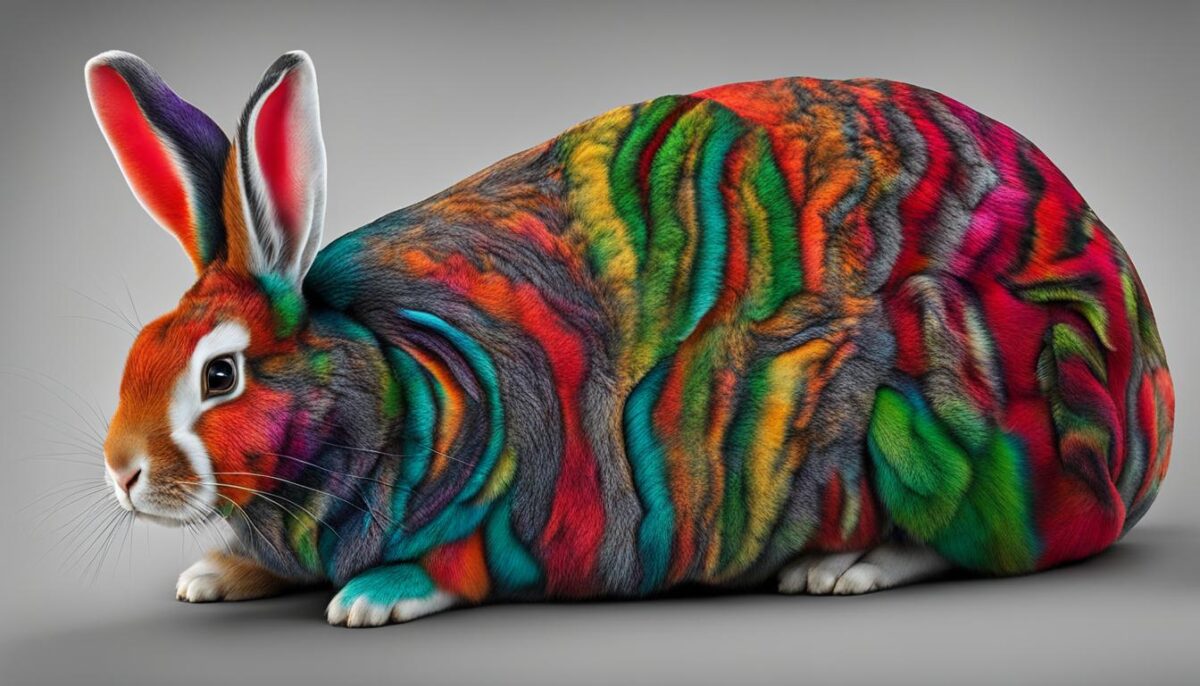
The rex rabbit’s coat is truly a marvel of nature. Its velvety texture, intensified colors, and distinct genetic factors make it a sought-after breed among rabbit enthusiasts. Whether you’re drawn to the plush feel or the striking appearance, rex rabbits are sure to capture your heart and leave you amazed by their extraordinary coat.
The Role of Temperature in Rabbit Color Genetics
Temperature plays a significant role in rabbit color genetics, particularly with genes like ch and c. The ch gene, responsible for the Californian or Himalayan color pattern, is temperature-sensitive and leads to the development of points (darker fur) on cooler parts of the rabbit’s body. The c gene, associated with red-eyed white rabbits, can cause smuttiness in areas that should remain white when exposed to warmer temperatures. Temperature influences the expression of certain genes, adding an interesting dynamic to rabbit color genetics.
“Temperature influences gene expression in rabbits, leading to unique coat color patterns. The ch gene, for example, results in darker fur on cooler parts of the body, creating the classic Himalayan pattern. Warmer temperatures can cause the c gene to produce smuttiness in areas that should be purely white in red-eyed white rabbits. Such temperature-dependent color variations highlight the intricate interplay between genetics and environmental factors in determining rabbit coat colors.”
Understanding the impact of temperature on rabbit color genetics is crucial for breeders and enthusiasts alike. It provides insight into the mechanisms that contribute to coat color variations and can help predict the possible outcomes of breeding programs. By considering the temperature sensitivity of certain genes, breeders can make informed decisions and manipulate environmental conditions to achieve desired color patterns in their rabbits.
| Gene | Temperature Sensitivity | Color Effect |
|---|---|---|
| ch | Temperature-sensitive | Development of points (darker fur) on cooler parts of the body |
| c | Temperature-sensitive | Possibility of smuttiness in areas that should remain white |
As temperature can influence rabbit coat color, it is essential for breeders and owners to provide their rabbits with a suitable environment. Providing proper temperature regulation, such as shelter from extreme heat or cold, can help maintain the intended coat color and prevent unwanted variations. Taking temperature into account in rabbit color genetics adds another layer of complexity and fascination to the world of rabbit breeding and coat color inheritance.
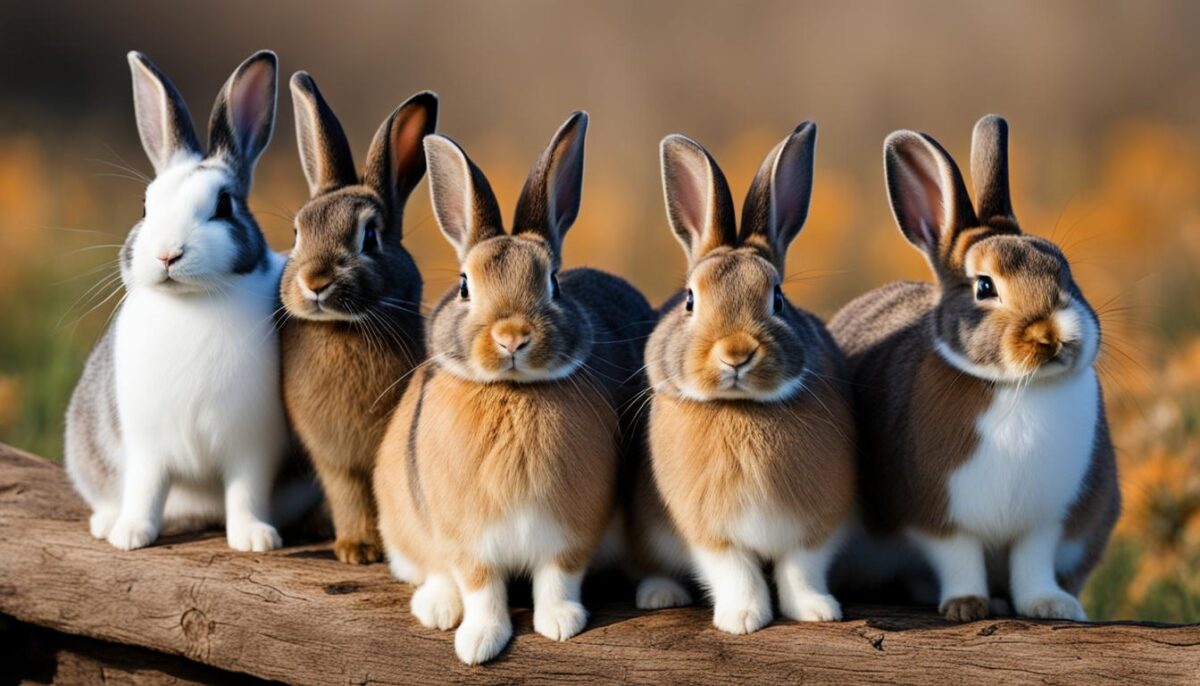
Name Ideas Based on Rabbit Coat Color
Choosing a name for your rabbit can be a fun and creative process. One approach is to draw inspiration from your rabbit’s coat color. By selecting a name that reflects their unique hues, you can add an extra touch of personality to your furry friend. Here are some name ideas based on different rabbit coat colors:
White:
- Snowball
- Marshmallow
- Pearl
- Ivory
Black:
- Shadow
- Jett
- Midnight
- Raven
Brown:
- Cocoa
- Hazel
- Amber
- Maple
Gray:
- Silver
- Misty
- Ash
- Smokey
Blue:
- Sapphire
- Sky
- Indigo
- Bluebell
These are just a few examples to spark your imagination. Feel free to mix and match names or explore other colors for even more possibilities. Ultimately, the perfect name for your rabbit is one that resonates with you and captures their unique charm. Whether they’re a Snowball or a Midnight, their name will be a reflection of their beautiful coat color and the special bond you share.
The Delight of Bonding with Your Colorful Bunny
No matter what color your bunny is, they are sure to bring joy and personality into your life. Bonding with your rabbit is an incredible experience, regardless of their coat color. The diversity of colors in rabbits adds an extra element of visual appeal, making each bunny unique and beautiful in its own way. Appreciating the color genetics of your rabbit can deepen your understanding and connection with them, enhancing the bond you share.
When you spend time with your colorful bunny, you’ll discover their individual quirks and preferences. Some rabbits love to be cuddled and doted on, while others may prefer exploring and hopping around. Taking the time to understand your bunny’s behavior and body language will help you build trust and create a strong bond.
Engaging in activities with your bunny can also strengthen your bond. Whether it’s playing with toys, providing enrichment activities, or simply grooming them, these interactions will foster a sense of companionship and mutual affection. Remember to always handle your rabbit gently and provide a safe and comfortable environment for them to thrive.
Creating a Welcoming Environment
Creating a welcoming environment for your rabbit is vital for a strong bond. Your rabbit needs plenty of space to hop and play, as well as a cozy sheltered area for rest. Ensure they have a proper diet consisting of fresh hay, vegetables, and a small amount of pellets to keep them healthy and happy. Regular veterinary check-ups are also essential to monitor your rabbit’s overall well-being.
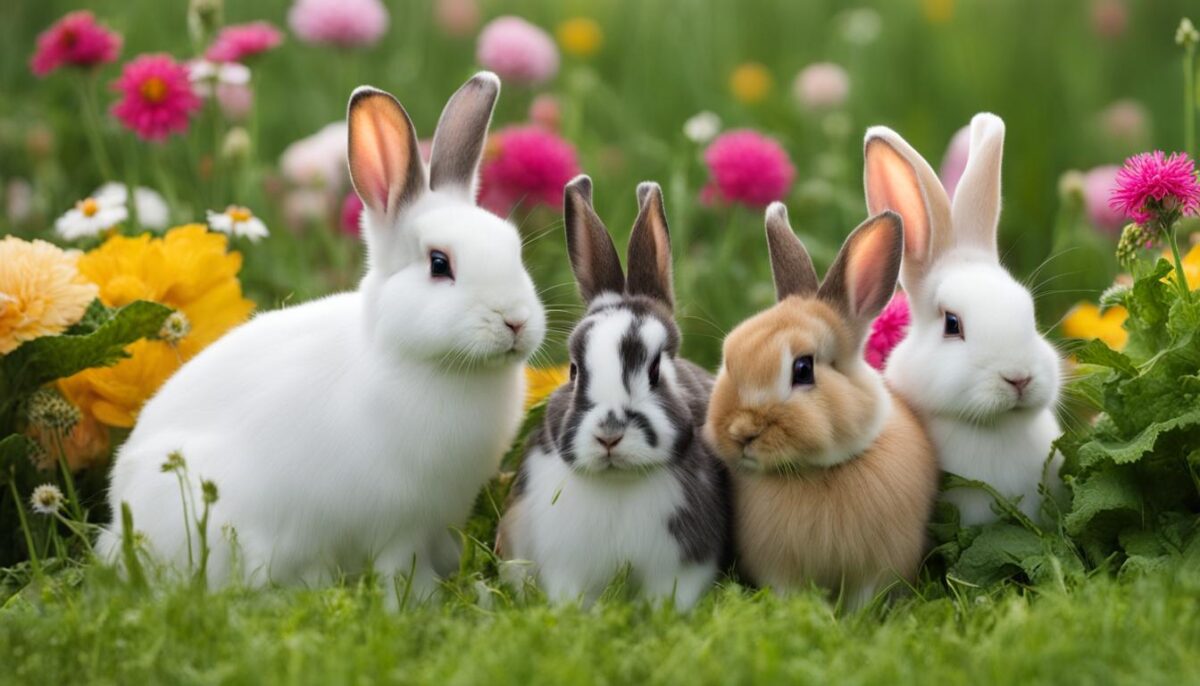
Remember, every rabbit is unique, and bonding experiences may vary. Patience and understanding are key when developing a bond with your colorful bunny. Embrace their colorful coat as a reflection of their individuality, and cherish the moments you spend together.
Conclusion
Understanding rabbit color genetics is essential for breeders and enthusiasts who want to predict the coat colors and patterns of their rabbits’ offspring. The rabbit color calculator provides a valuable tool for exploring different color combinations and probabilities.
By delving into the world of rabbit color genetics, you can gain a deeper appreciation for the intricate and fascinating variations found within rabbit breeds. Whether you are a breeder, a pet owner, or simply a rabbit enthusiast, exploring the genetics behind rabbit coat colors opens up a whole new world of understanding and appreciation for these adorable creatures.
Discovering the genetic factors that determine coat color allows breeders to selectively breed rabbits with specific color traits, creating beautiful and unique combinations. It also enhances the overall knowledge and understanding of rabbit genetics, contributing to the advancement of the rabbit breeding community.
So, whether you’re planning to breed rabbits or you simply admire their stunning coat colors, take a moment to explore the fascinating world of rabbit color genetics. It’s a journey that will deepen your connection with these adorable creatures and unveil the many hidden wonders within their coats.
FAQ
What is the rabbit color calculator?
The rabbit color calculator is a tool that uses the genes of the sire and dam to predict the color and patterns of their offspring.
How does the rabbit color calculator work?
The calculator uses the combination of genes from the sire and dam to calculate the probable color possibilities for the offspring.
Can the rabbit color calculator predict additional genes?
Yes, the calculator can take into account additional genes for a more accurate prediction.
What is a rabbit breed color chart?
A rabbit breed color chart categorizes rabbit colors based on gene groups to determine the color and pattern of a rabbit’s coat.
How can I use the rabbit color calculator?
The calculator offers two modes: “color” and “genes.” In the “color” mode, users can select the colors of the sire and dam from a list and choose whether to include additional genes. In the “genes” mode, users can specify the complete genotypes of the rabbits’ color.
Are there additional genes that can influence a rabbit’s coat color?
Yes, there are various additional genes that can be included in the rabbit color calculator to determine the coat color of specific breeds.
What is unique about the coat of rex rabbits?
Rex rabbits have a unique coat structure where their guard hairs are the same length as their undercoat hairs, resulting in a velveteen-like texture and more intense color appearance.
How does temperature affect rabbit color genetics?
Temperature can influence the expression of certain genes, such as the ch and c genes, and create color patterns on cooler or warmer parts of the rabbit’s body.
Can I name my rabbit based on its coat color?
Yes, naming your rabbit based on its coat color can be a fun and creative approach. You can draw inspiration from the color, such as Frosty for a white rabbit or Toffee for a light brown rabbit.
Is coat color important when bonding with a rabbit?
No, bonding with your rabbit is an incredible experience regardless of its coat color. The diversity of colors in rabbits adds visual appeal, making each bunny unique and beautiful in its own way.


